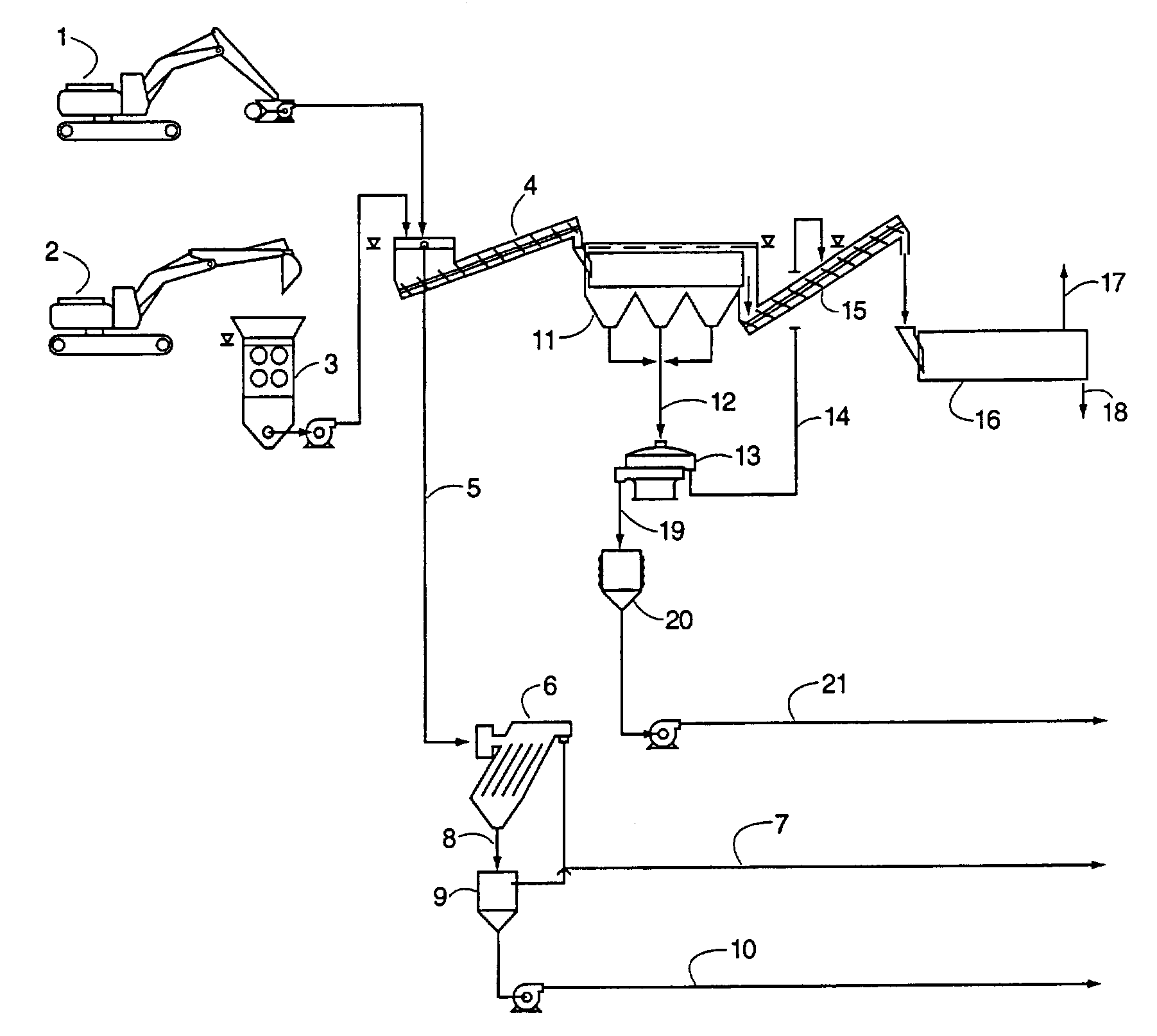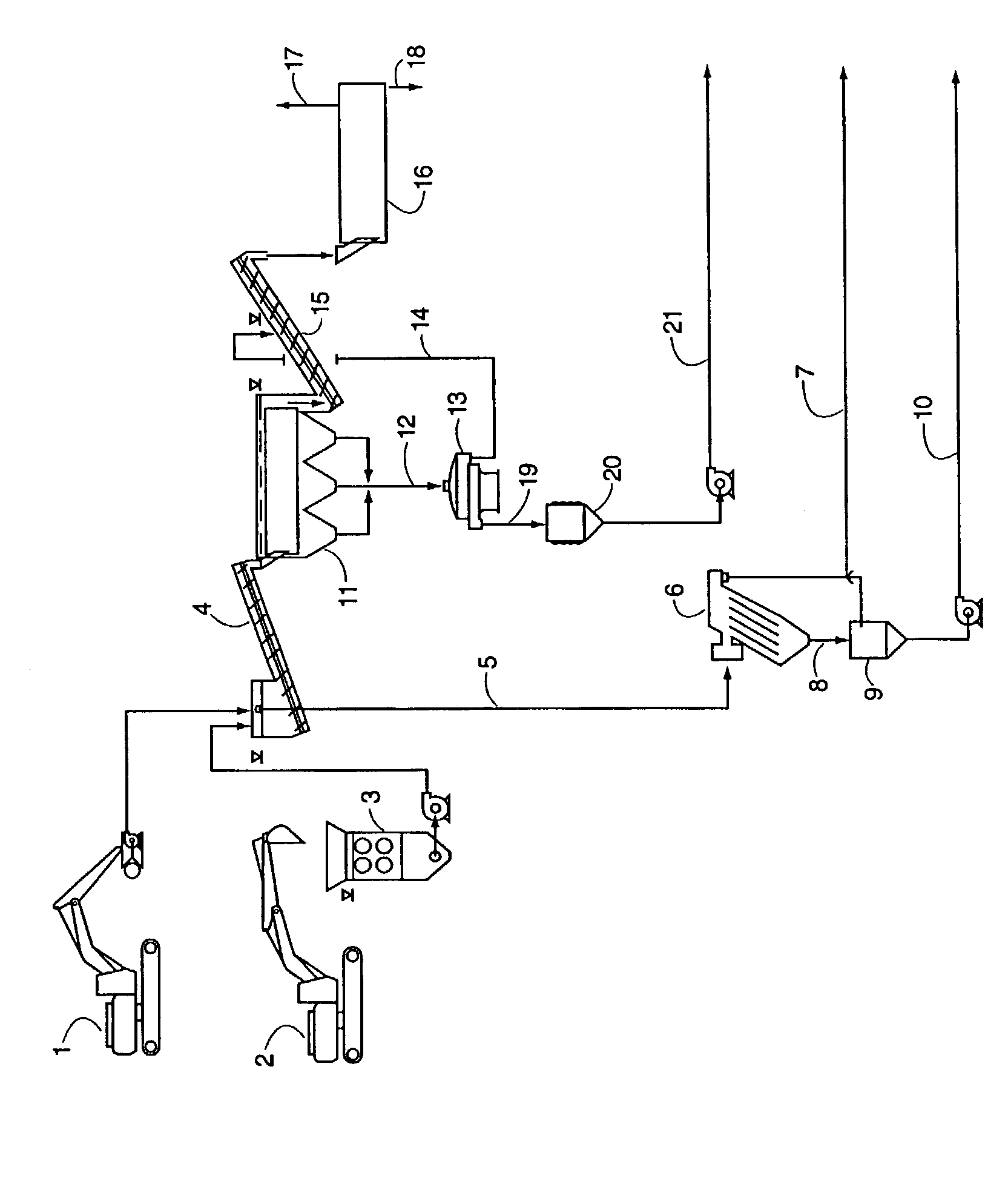Process for total environmental remediation of a phosphorus contaminated site
a phosphorus contaminated and total environmental technology, applied in the separation process, multi-stage water/sewage treatment, waste water treatment from quaries, etc., can solve problems such as non-hazardous discharg
- Summary
- Abstract
- Description
- Claims
- Application Information
AI Technical Summary
Benefits of technology
Problems solved by technology
Method used
Image
Examples
example
[0017]Frozen phosphorus sludge stored under water in a sludge pond was dredged below water level and pumped through an 8-inch line as a water-slurry to a sand screw at a rate of about 1,822 gallons per minute. The solids that settled out in the sand screw were conveyed to a rotating trommel screen that was filled with hot water maintained at a temperature of about 140 to 145° F.
[0018]Molten sludge flowed through the 3 / 16 inch screen openings in the trommel screen and was pumped on to a vibrating screen. Solids greater than 30 mesh size were retained on the screen and were combined with coarse solids from the trommel screen and dried in a rotary dryer at a temperature of about 400 to 460° F. to burn off any residual phosphorus. The amount of phosphorus in solids going into the dryer was generally less than 1 wt % and was less than 25 ppm as the solids came out of the dryer.
[0019]Molten sludge passing through the 30-mesh vibrating screen was pumped to a holding tank for further proc...
PUM
| Property | Measurement | Unit |
|---|---|---|
| density | aaaaa | aaaaa |
| frozen | aaaaa | aaaaa |
| weight | aaaaa | aaaaa |
Abstract
Description
Claims
Application Information
 Login to View More
Login to View More - R&D
- Intellectual Property
- Life Sciences
- Materials
- Tech Scout
- Unparalleled Data Quality
- Higher Quality Content
- 60% Fewer Hallucinations
Browse by: Latest US Patents, China's latest patents, Technical Efficacy Thesaurus, Application Domain, Technology Topic, Popular Technical Reports.
© 2025 PatSnap. All rights reserved.Legal|Privacy policy|Modern Slavery Act Transparency Statement|Sitemap|About US| Contact US: help@patsnap.com


